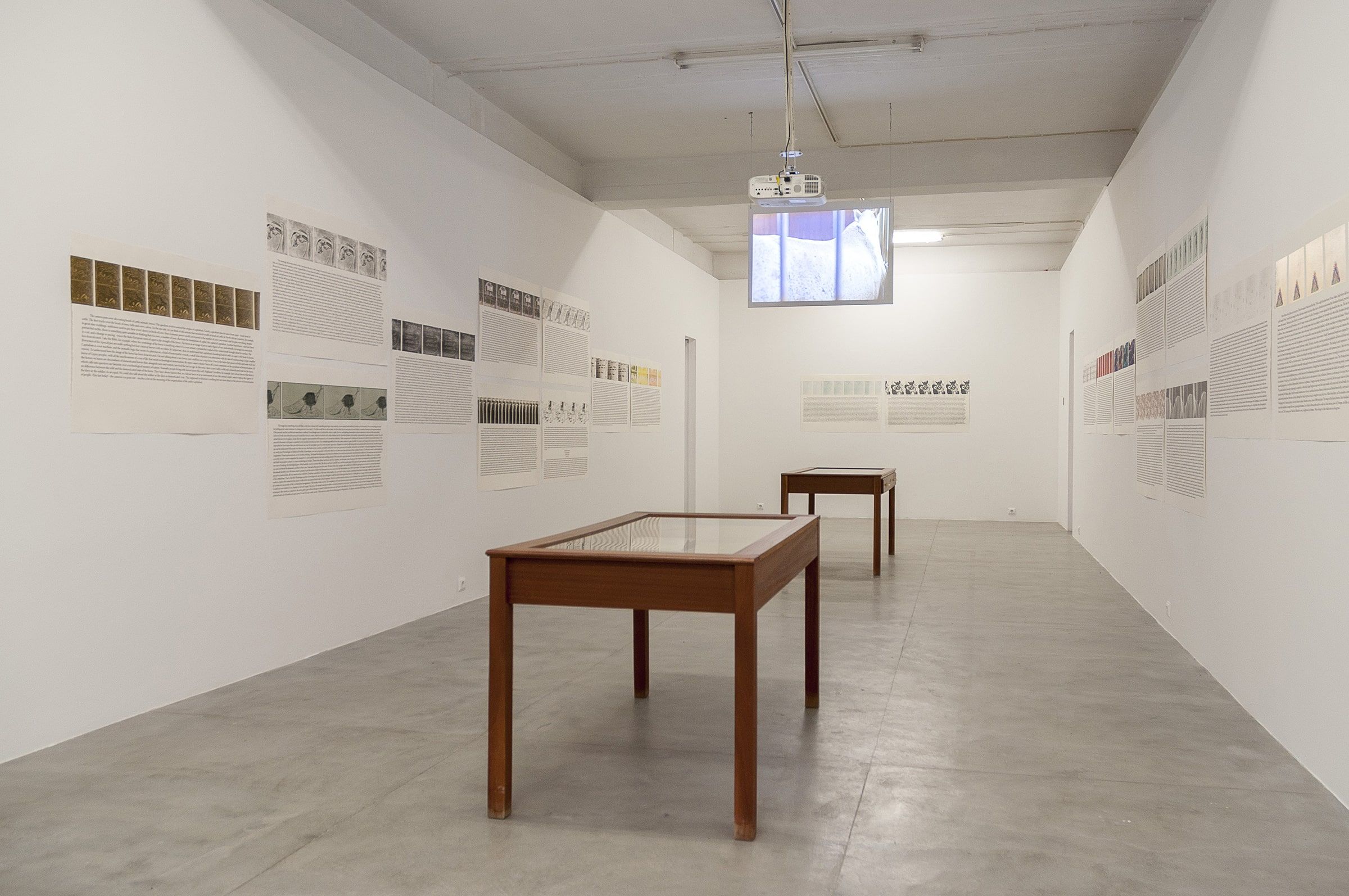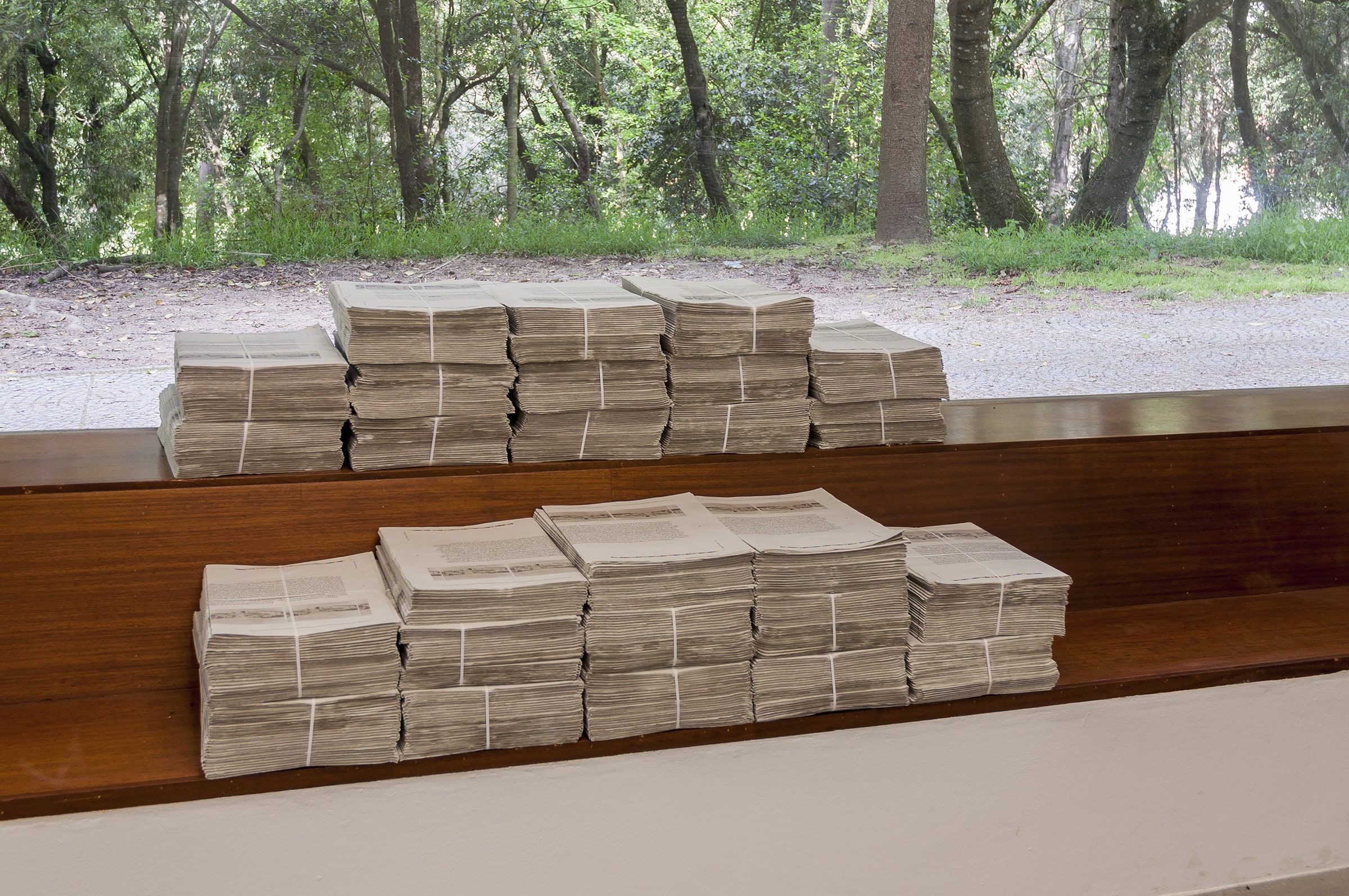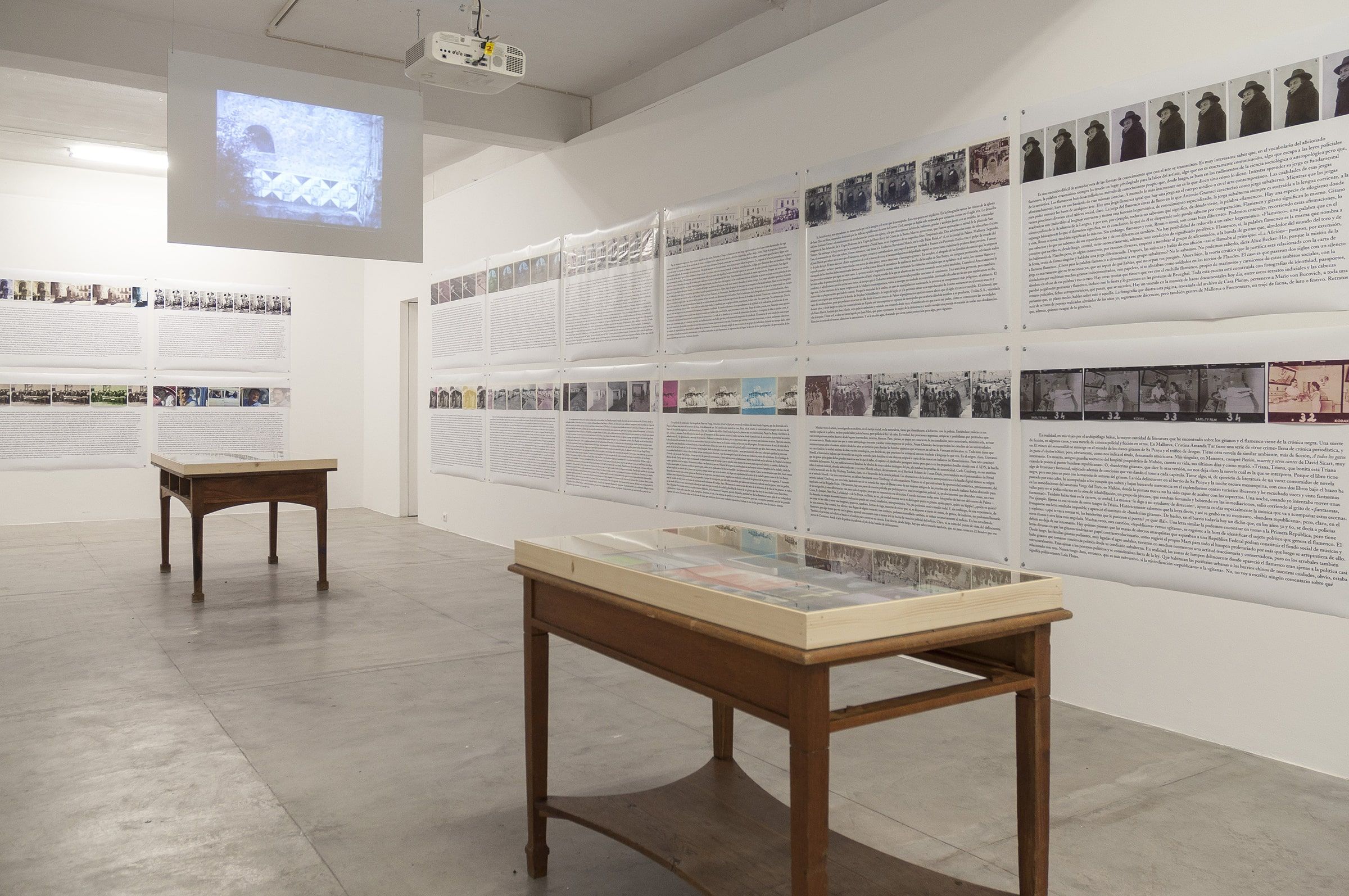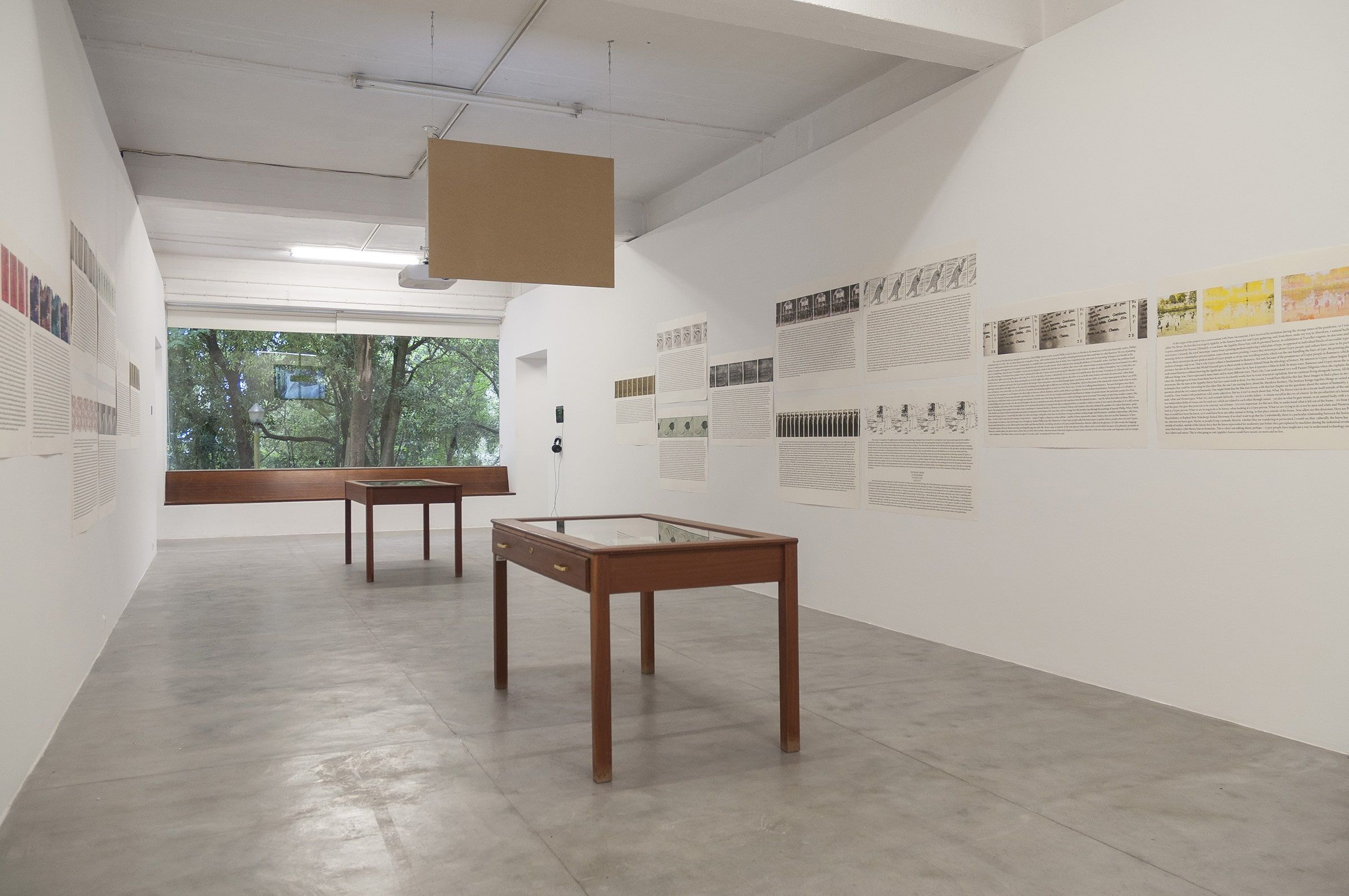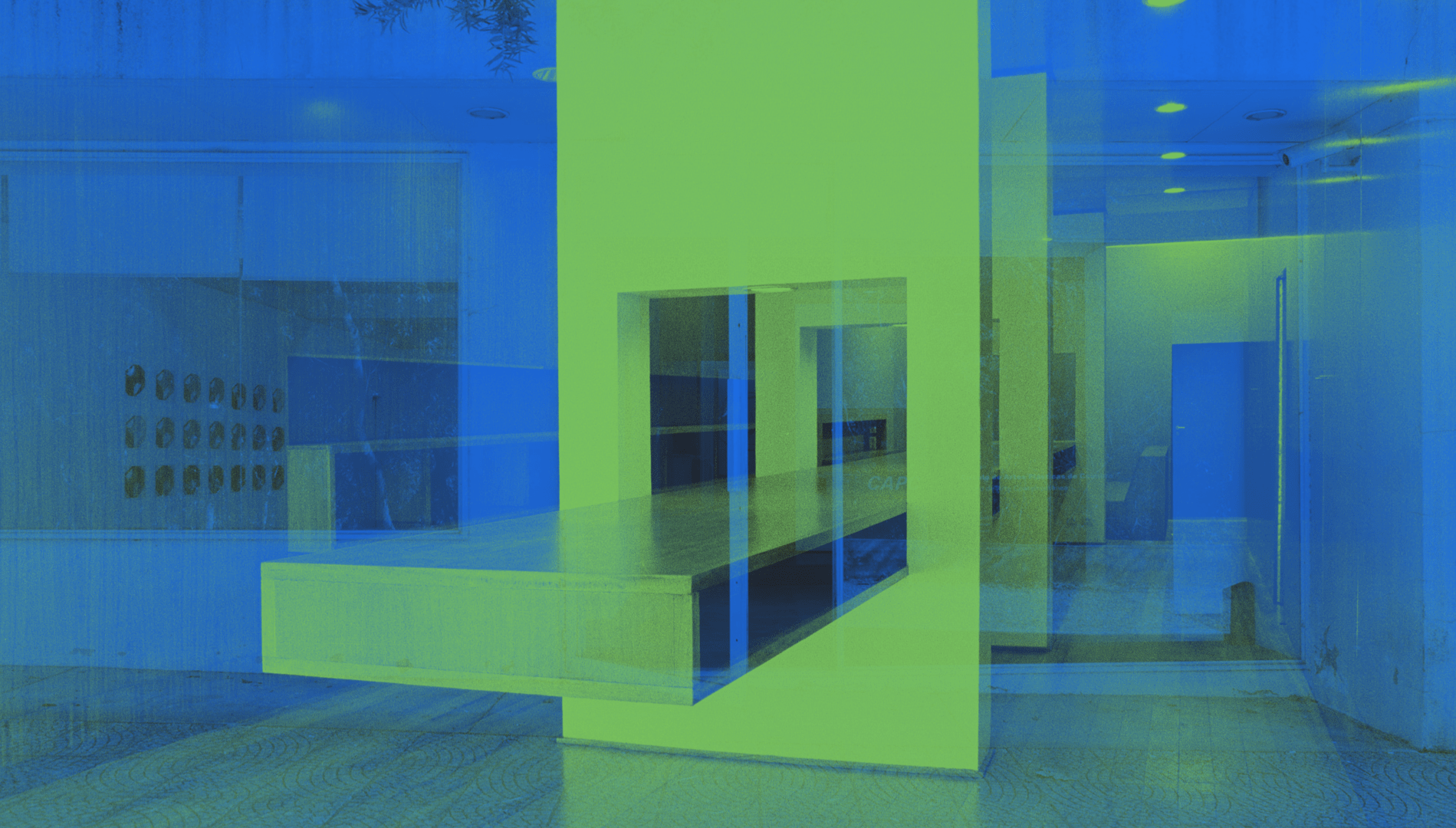Pedro
G. Romero
Pedro G. Romero



Spain, 1964
Pedro G. Romero (Aracena, Spain, 1964) is a researcher, curator and has been working as an artist since 1985. He runs two projects, Archivo F.X. and Máquina P.H., through which he organises the Independent Platform for Modern and Contemporary Flamenco Studies, whose main objective is to expand the field of studies on the subject.
His work formalises a critical analysis of certain concerns, such as historical passages and events, the circulation of images, sacred iconography, flamenco culture, the iconoclastic gesture of the 20th century artistic avant-garde, the History of Modern Art, popular culture, cultural policies, the transformation of urban spaces, among others. Pedro G. Romero questions the ideological administration of images concerning some basic questions, such as: the construction of the image is at whose service and to whom it responds, its visibility or invisibility in specific contexts, its appropriation, capitalisation and reproduction over time. What is the role of the cultural classes as producers and reproducers of the images that populate contemporary artistic practices? What power or capacity for activation does the political management of images have in a cultural field that constantly redefines its agents, including the museum as a public space?
C de Canciones (Scénario), 2024
B de Bestiario (Scénario), 2022
A de Archipiélago (Scénario), 2023
75 photographic panels (100 × 90 cm), photographs, books, archive films, assemblages (engravings, handprints, academic reprography, etc.) and free-circulation graphic editions. Variable dimensions.
With the collaboration of Filiep Tacq.
Courtesy of the artist.
Like notes for the script of a hypothetical film, Pedro G. Romero collects images and textual excerpts in Scénario, a series of works articulated in different parts. Previously presented in the Balearic Islands (A de Archipiélago) and in Aberdeen, Scotland (B de Bestiario), the third part, C de Canciones, is being developed in the context of the Biennial as a commissioned work. Bringing research closer to drifting and wandering between photographic/cinematographic archives, academic centres, institutions and second-hand bookshops, the artist works around what he calls “the new Babylonians” — a reference to Guy Debord’s thoughts on Constant Nieuwenhuys’ New Babylon project. Under this banner, Pedro G. Romero locates an intersection of identity groups, such as gipsies, Romani, revellers, popular singers and dancers and Spanish exiles, looking for points of convergence.
Romero reworks the images and texts that emerge from this preamble using different relevant cultural apparatuses in the context where each part of the series is developed. For the Biennial, there were two points of connection with the city of Coimbra: Tipografia Damasceno, historically linked to craft printing and political activity in Portugal, and Associação Trampolim (with mediation by Jorge Cabrera and Adriana Campos), which works with gipsy children and teenagers in Parque Nómada, in Campos do Bolão. The former was integrated into the work by producing the graphic materials that make up the exhibition. The second, through a radio version produced by members of the Associação Trampolim about Gil Vicente’s Auto das Ciganas — a work considered to be the first fiction published in Europe, which, on the one hand, opens up stereotypes about gipsies and makes them the protagonists of a political allegory that is alien to them and, on the other, serves as a document about the significance of their presence in the court of Évora around 1520.
Pedro G. Romero lives between Seville and Barcelona. As a curator, he has carried out projects such as Tratado de Paz (Donostia), Aplicación Murillo: materialismo, charitas y populismo (ICAS), Máquinas de vivir (CentroCentro and La Virreina) and Popular (IVAM). As an artist, his work has been exhibited in important national and international institutions, including: dOCUMENTA, Athens/Kassel, Manifesta, Fundação Bienal de São Paulo, Bergen Assembly, La Biennale di Venezia, Museu Reina Sofia, Fundació Antoni Tàpies, Centro de Arte Dos de Mayo and Galeria Municipal do Porto.



